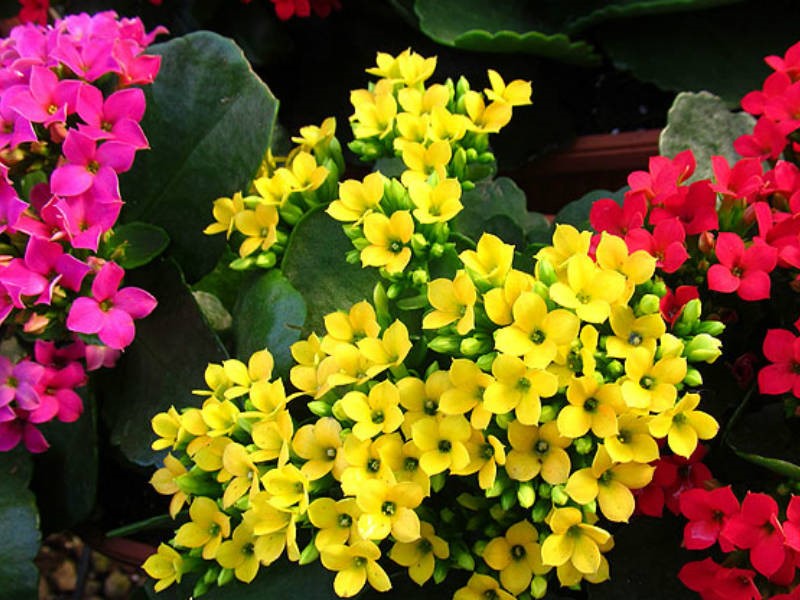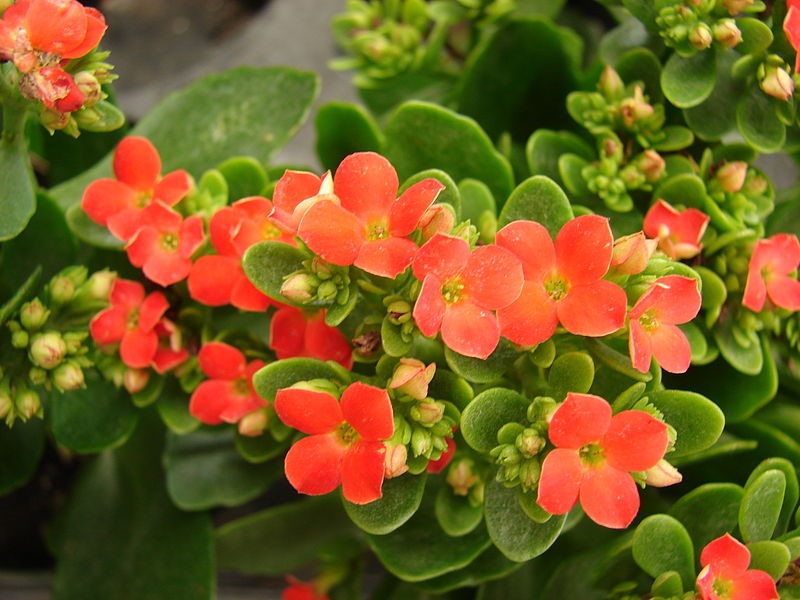Flowering kalanchoes are staples of the holiday and florist trade, with their cheery clusters of blooms on compact, upright plants sure to brighten your windowsill. You could see the colorful, happy flower clusters of flowering Kalanchoe. A cousin to the Jade plant, flowering Kalanchoe is a fairly low-maintenance succulent house plant.

buy Kalanchoe >>
Flower heads on kalanchoe blossom in bright oranges, pinks, yellow, red, and white on a compact, upright plant about 6-12 inches tall. The flowers last several months, and the green plants are pretty year-round.
The deep green, scalloped leaves of the kalanchoe are just as attractive as the flowers. The sculpted foliage persists after bloom and provides for a handsome plant. The starry flowers are long lasting and bloom in winter to spring.

Buy Kalanchoes >>
Kalanchoes need lots of light, preferably a south-facing window in winter and bright indirect light (or east/west window) in summer. If your Kalanchoe plant is looking leggy and thin, it probably isn’t getting enough light.
Kalanchoe plants do best in a well-draining potting mix designed for cacti and succulents, or stir in plenty of perlite or sand to improve drainage.

Buy Kalanchoes >>
Over-watering is the main killer of kalanchoes. Allow your kalanchoe to get dry between waterings. Then water thoroughly until it runs out the bottom, and immediately empty the drainage tray. Never leave the plant sitting in water.
The best temperatures for formation of flowers are 40-45 F. (4-7 C.) at night and 60 F. (16 C.) during the day. Kalanchoe care for plants that have begun to form buds is the same as that for flowering plants.
Buy Kalanchoes >>
While your kalanchoe is blooming, feed it every few weeks with a balanced organic fertilizer. Kalanchoes do well in clay pots, and they must have a drainage tray that can be emptied. They’re small plants that don’t often have to be repotted.
Comments
Post a Comment